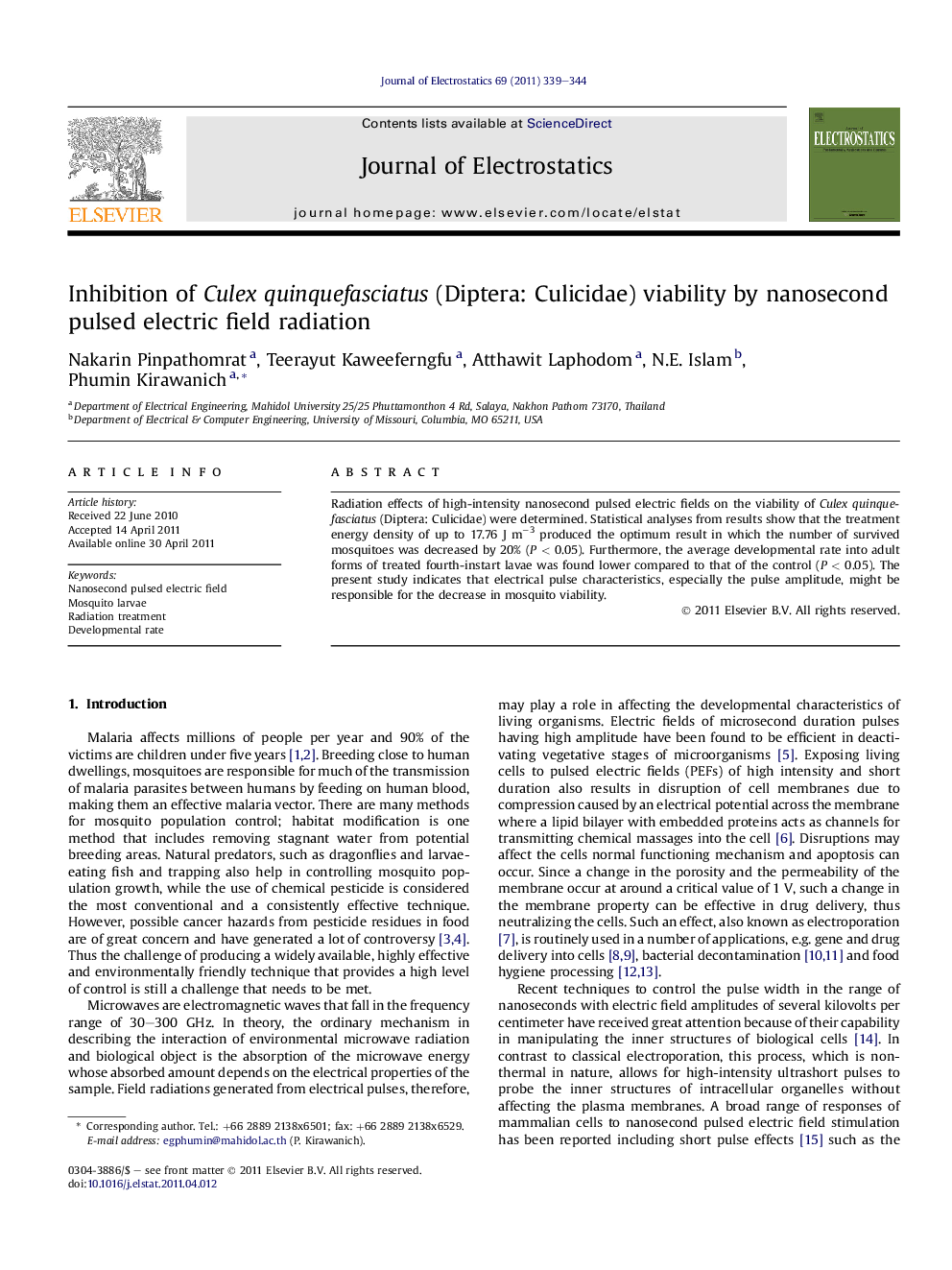| Article ID | Journal | Published Year | Pages | File Type |
|---|---|---|---|---|
| 727099 | Journal of Electrostatics | 2011 | 6 Pages |
Radiation effects of high-intensity nanosecond pulsed electric fields on the viability of Culex quinquefasciatus (Diptera: Culicidae) were determined. Statistical analyses from results show that the treatment energy density of up to 17.76 J m−3 produced the optimum result in which the number of survived mosquitoes was decreased by 20% (P < 0.05). Furthermore, the average developmental rate into adult forms of treated fourth-instart lavae was found lower compared to that of the control (P < 0.05). The present study indicates that electrical pulse characteristics, especially the pulse amplitude, might be responsible for the decrease in mosquito viability.
► The influence of electromagnetic fields on the mosquito viability was examined. ► Post-exposure survivals and the rate of larva-to-adult transformation were determined. ► Fourth-instar larvae were exposed to radiation from nanosecond electrical pulses. ► Electrical pulse amplitude might be responsible for the decrease in viability.
